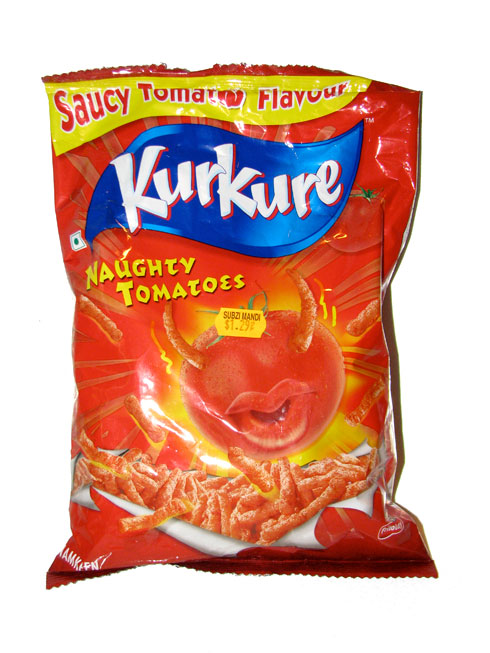Street Art: Joshua Allen Harris’ Inflatable Bag Monsters
August 24, 2010
This video is from New York Magazine, July 22, 2008. Joshua Allen Harris creates moving sculptures on the streets of NYC using garbage bags, tape, a matt knife and, crucially, subway exhaust. Video by Jonah Green.
3D Photos: Wings and Wheels 2010 Car & Air show
August 18, 2010
Sunday, May 30, 2010. Sikorsky Memorial Airport, Stratford, CT.
Naughty Tomatoes – File Under “Strange Snacks”
August 16, 2010

Naughty Tomatoes, a spicy, tomato-flavored snack that looks like thin, orange-red Cheetos, purchased in Jackson Heights, Queens, August 7, 2010. The packaging shows a tomato with the product itself as ‘devil’ horns and a full-lipped cartoon mouth. Would like to have been present at the marketing meeting for this product.
From the back of the package:
Upload your tedha photos, videos and voice recordings on www.kurkure.co.in to showcase your tedhapan!

Kurkure Mast Taatar Sev
Fry mustard seeds & jeera in 4 tsp. oil. Add 3 crushed cloves & 1/2 tsp. tumeric powder. Ass 4 tomatoes cut in the shape of flowers. Add 1 cup water. Add dhaniya, jeera powder, sugar & salt to taste. When the water starts boiling, add thick ratiami sev. Cook for 1 min. In a separate bowl, take small pieces of Kurkure Naughty Tomatoes, coriander leaves & green chillies. Mix well. Add as filing to the tomatoes. Serve with tea. Recipe courtesy Gada Family.
3D Photos: Summer Dogs 2010
August 16, 2010
Anaglyphs of Luna (black) and Huxley (chocolate) Labradors and Bailey, Golden Retriever. Russian Beach, Stratford, CT. Summer 2010.
3D Photos: Sculpture Art from the Crosby Street Hotel, NYC
August 16, 2010
A trio of anaglyph images from the fantastic collection of art that graces the lobby of the Crosby Street Hotel in New York City. May 1, 2010.
Clarity on Copyright: The Purpose of Copyright Law – It’s Not What You Think
August 16, 2010
In the digital age with the almost frictionless ability to reproduce audio, video and text the issue of copyright has entered the mainstream in a big way. No longer the rarified domain of intellectual property attorneys, copyright issues make the news with the regularity of the latest RIAA lawsuit over the unauthorized sharing of music files and the current sturm and drang over Wikileaks posting of the Afghan War Diary.
It seems people only remember the first half of Stewart Brand’s famous pronouncement in 1987, “Information wants to be free. Information also wants to be expensive . . .That tension will not go away.” In 1984 at the first Hackers Conference, Brand put it in a more nuanced way:
“On the one hand information wants to be expensive, because it’s so valuable. The right information in the right place just changes your life. On the other hand, information wants to be free, because the cost of getting it out is getting lower and lower all the time. So you have these two fighting against each other.”
Thanks to the good folks at TechDirt for linking to this excellent article by attorney and associate professor Lydia Pallas Lorn of Northwestern’s School of Law of Lewis & Clark College, The Purpose of Copyright Law.
Copyright and patent law derives from a clause in the US constitution and “the primary purpose of copyright is not, as many people believe, to protect authors against those who would steal the fruits of their labor,” according to the author. The purpose of copyright is “to promote the progress of knowledge and learning.”
Pallas Loren traces the origin of this concept from English common law and the early publishing industry to the Digital Millennium Copyright Act of 1998 and beyond. I believe this is essential reading for anyone who creates content today – from the lowly blog scribe all the way up to Lady Gaga. Understanding copyright is necessary and Lydia Pallas Loren lays it all out clearly and definitively, in my opinion.
I wish the web contained more writing of this quality and thoughtfulness and less gossip, opinions, trivia and noise about disposable celebrities and manufactured scandals. ” ‘Tis of no importance what bats and oxen think.” – Ralph Waldo Emerson.

































